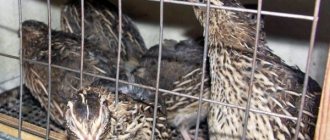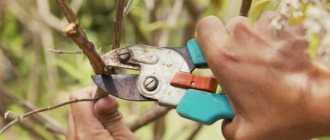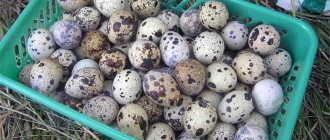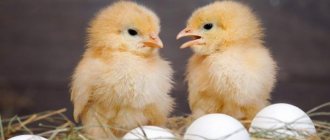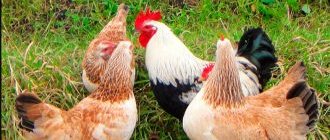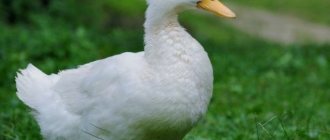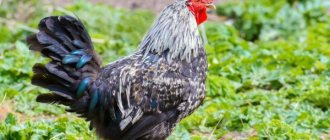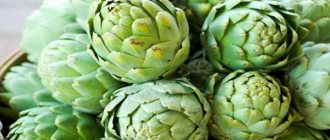Why quails?
Quails are the smallest birds from the gallinaceae order and the pheasant family. The weight of such a bird is about 150 g, and the length of the body is no more than 20 cm. They are increasingly bred at home and in the country due to three points:
- This is an excellent alternative to classic poultry farming, since you do not need to build a large chicken coop, walk the birds and think about what to feed them. So, to keep 50 quails, several square meters are required, if you approach the organization of space correctly.
- Despite their modest size, quails are excellent layers. Some species can produce up to 300 eggs per year. On average, from 50 birds per day you can get about 45-48 eggs, which is equivalent to 8 chicken eggs, but they are more useful than their counterparts because they contain several times more B vitamins, copper, potassium, iron, phosphorus and cobalt. It is noteworthy that they can be consumed raw, since they do not carry salmonellosis.
- Poultry meat is dietary and also rich in B vitamins, iron, copper, potassium and beneficial amino acids. It is especially recommended for people who have problems with the gastrointestinal tract, heart and vascular diseases, as well as diabetes, tuberculosis, asthma or anemia.
Quail meat can be stored for a long time, as it retains its beneficial properties even after freezing.
How to choose a productive breed?
Depending on the purpose of cultivation, quail breeds are divided into egg-laying and meat-producing ones. The characteristics of popular breeds can be found in the table:
| Name | Group | Egg production, pieces/year | Egg mass, g | Live weight, g | Fertility, % | |
| male | females | |||||
| Japanese | egg | 250-300 | 9-11 | 110-130 | 130-150 | 80-90 |
| Pharaoh | meat | up to 220 | 12-16 | 200 | up to 300 | 80-90 |
| White English | egg | about 280 | 10-11 | 160 | 190 | 75 |
| Black English | egg | 280 | 10-11 | 170 | 200 | 75 |
| Tuxedo | egg and meat | 280 | 10-11 | 140-160 | 160-180 | 80-90 |
| Marble | egg | 260-280 | 9-10 | 110-120 | 130-150 | 70 |
| Manchurian | meat | 220 | 16 | 150-200 | 300 | 80 |
| Estonian | egg | 300-310 | 12 | 170 | 200 | 95 |
| Population of NPO "Complex" | egg and meat | 260 | 11-12 | 150-170 | 180-200 | 70-80 |
The most popular breeds are:
- Japanese . Females begin laying eggs at the age of 1.5-2 months. They can lay up to 300 eggs per year. They are undemanding to living conditions and resistant to diseases. Domestic quails have a color similar to birds living in the wild.
- British (English) white and black . Less egg-laying than Japanese (280 eggs per year), but slightly larger. Obtained from mutations of Japanese quails. They have black plumage with a brown tint. Black quails have a higher mass compared to the white species.
- Manchurian golden ones . Egg production up to 250 eggs per year. They have a very beautiful color of feathers - brown and half-wheat, which gives the bird a pleasant golden hue.
- Pharaoh . It is in steady demand among farmers. Its coloring is reminiscent of Japanese quails. They begin to lay eggs at the age of 40-50 days, but produce relatively few eggs - about 200 eggs per year. Such quails are actively used for breeding broilers.
Japanese breed of quail
British white quail
English black quail
Manchurian golden quail
Quail paroda "Pharaoh"
Japanese, Estonian, merle and British white/black breeds, as well as Pharaoh, are often chosen for home breeding.
Sales of finished products - profitability of quail breeding
- cost of quails – $600-750;
- incubator – $150-200;
- cell sections – $150-200;
- feed, mineral and dietary supplements – $200-350 per month;
- monthly electricity costs are about $40-60;
- monthly administrative and transportation costs.
This business plan for quail breeding shows that organizing a small farm will require $1220-1660, of which about $500 will be current monthly costs.
The income from such livestock, provided that 70% of them lay eggs daily, will be:
- 490 eggs daily, which means about 14,700 eggs per month;
- with the cost of 1 dozen eggs being $0.65, the monthly profit is about $955.
Gutted quail carcasses will bring $8-10 per 1 kg, which is about $150 per month. These figures may vary depending on the volume of products supplied. It is best to slaughter poultry strictly to order. When selling litter, raising quails at home from scratch can provide an additional monthly income of up to $60.
Following from the above, the profitability of quail breeding is about $1,200 per month.
But first, it’s worth drawing up a business plan, let’s look at the example of 1000 heads:
- The cost of 100 birds is $1,000.
- The cost of the cells will be about 12 – 2200 dollars.
- Small-sized household incubator - $200.
- Feed costs: $200 per month.
- Lighting and heating costs: $100 per month.
- Monthly profit from selling eggs is $800.
- Monthly profit from the sale of meat products is $300.
- Net profit per month – $900.
- Payback period: 5 months.
Eggs should be packaged in special packaging. The shelf life of eggs in the refrigerator is no more than 60 days, at room temperature no more than 30 days.
Eggs should be sold in markets, shops, and supermarkets. It is also worth considering that this is a dietary product and very healthy, so you can agree on supplies to kindergartens, hospitals, health centers, sanatoriums, tourist centers, and holiday homes.
Quail meat can be supplied to restaurants and try to organize sales through large retail outlets.
It is also worth considering that in order to cooperate with buyers, you will need to conclude an agreement and you will need to obtain permission for supply and sales from the veterinary service, which is usually issued after a complete examination of the product in the laboratory.
Arrangement of premises and cages
To successfully raise quails, the room should be equipped with ventilation, lighting, and heating. You should also prepare comfortable cages, feeders and drinking bowls. Every detail needs to be given due attention.
Lighting
The room should be bright for 17-18 hours. Incandescent lamps should be turned on at 6-7 am and turned off at 11 pm. With round-the-clock lighting, females begin to lay eggs more often, but this leads to their rapid “wear and tear.” Bright lighting is not recommended as it can provoke restless behavior and aggression among birds. Quails may start fighting and pecking eggs.
To illuminate a room of 16 square meters. m one lamp of 40 watts is enough. In summer, on sunny days, natural light is sufficient.
If there are no windows in the room where the birds are kept, in addition to lighting with incandescent lamps, the quails must be illuminated with ultraviolet lamps. They create an imitation of sunlight and prevent rickets in birds.
Humidity and temperature
The moisture content in the room is allowed no more than 50%. The optimal value is 60-70%. If it is too dry, quails rarely lay eggs, and their plumage becomes brittle. You can correct the situation by placing a bucket or cup of water next to the cage. In damp rooms, on the contrary, birds can catch cold and die.
The room temperature should be from 18 to 24 degrees. It is worth considering that if it drops to 5 degrees, the birds will die out. It is important to ensure that during the winter the room temperature is not below 18 degrees, otherwise the egg production of birds may be greatly affected. It is important to avoid temperature fluctuations as this will also affect the performance of the birds.
Ventilation
If birds are raised in apartment conditions, it is necessary to install good ventilation, since the smell of droppings will be drawn into neighboring apartments, and this can lead to very unpleasant showdowns with neighbors. In this regard, it is easier to breed quails in the country or in a country house.
Cells
For indoor keeping of quails, ordinary bird cages are sufficient. They should be organized according to the following rules:
- make the cage frame from galvanized mesh, but in extreme cases metal can be used;
- maintain such a size between the rods that the bird can stick its head through, otherwise it will not be able to reach the feeder when feeding;
- the height of the cage is at least 20 cm, otherwise the quail may break their head when they jump;
- Provide space in the cage for two trays: one for eggs, and the second for litter, otherwise the eggs will be dirty and infection may occur.
The following nuances should be taken into account:
- keep the cells in a quiet place, but not on a windowsill exposed to strong sunlight;
- in a cage measuring 30x30 and 25 cm high you can keep 3 females and 1 male;
- if you plan to place cages on a loggia, you need to take care of its tightness and insulation, since drafts and temperature fluctuations can lead to illness and death of birds;
- You need to put paper on the bottom of the cage, or you can pour shavings or sand, but they should be changed daily;
- Wash the cells at least once every 2-3 months.
You can arrange racks of cages along the walls in a barn or other utility room. You can make them yourself using auxiliary materials.
Feeders and drinkers
You can make bunker feeders from roofing iron, but they must be deep and high - at least 10 cm in height. For water, it is best to use regular cups or clean cans. They can be installed behind the cage so that birds cannot knock them over while drinking.
Caring for chicks
If you decide to have quails at your dacha, you can purchase hatching eggs and hatch the chicks yourself. Before the quails appear, it is necessary to prepare the place where they will be kept. During the first week after birth, the chicks need to be provided with comfortable temperature conditions: 35°C. The temperature is gradually reduced, by about half a degree per day.
For full development, feed absorption and prevention of growth retardation, illumination in the poultry house should be around the clock. After 21 days, the light regime needs to be changed and made intermittent. Successful breeding of quail laying hens involves carrying out hygiene procedures, ensuring optimal balanced nutrition and free access to water.
For very small chicks, it is recommended to install tray feeders, and then change them to grooved ones. Feeders should be covered with nets to prevent babies from falling into them. After 21 days from the moment of birth, the quails are placed in separate containers.
At the age of 40 days, the quail is already a sexually mature individual. If you purchase two-month-old chicks to breed quails at your dacha, then it will be possible to immediately receive meat and egg products, which is much more profitable than purchasing incubation material. Thus, over the summer it is quite possible to increase the number of quails using the parent stock.
Mating and feeding of the parent stock
Having organized suitable conditions for keeping quails, you can proceed directly to their mating and pay special attention to feeding.
Pairing
For breeding work, it is necessary to select females at the age of 3-8 months, and males at 3-6 months. Quails of different breeds and closely related ones, as well as birds from the same manufacturer, are not suitable for mating.
If you limit the number of matings of females, the hatchability of chicks will increase. There should be no more than 4 females per male. Often the male avoids mating with high-grade hens, preferring low-grade ones. In such cases, the worst specimens are simply discarded and removed.
During the mating period, quails must receive a large amount of proteins and vitamins. You can purchase various vitamin supplements for these purposes. Bran is well suited for feed (preferably wheat, not rye).
The parent flock must be kept separately from meat breeds of birds. Over time, egg production in females may begin to decline and males will need to be replaced. This does not always go smoothly, since the new breeder is usually received with hostility by the female. They can chase them around the cage, pull out feathers and not let them near them. During the adaptation period, egg production decreases for about a week, but then is successfully restored.
Feeding
As for food, older quails eat a ready-made mixture of cereals, just like chickens. At the same time, for the growth and health of birds, it is worth giving the following products separately:
- bone or fish meal (2-3 times a week);
- chalk or lime;
- small pebbles and egg shells.
To diversify your diet, you can give:
- boiled potatoes;
- chopped greens;
- fresh vegetables, but finely chopped;
- sunflower seeds;
- grain waste.
It is worth feeding at the same time 2-3 times a day. The optimal serving size is 30 g per bird.
To keep the cage clean and less food wasted, the feeder should be placed outside the cage, but at such a distance that the quail can reach their food.
Is maintenance staff required?
Quail is an unpretentious bird and does not require special care, however, for a population of 700 individuals, 2 experienced workers will be required. Their tasks should include:
- preparation of feed and timely feeding;
- egg collection;
- regular cleaning of premises and cages;
- maintaining temperature conditions and controlling humidity indoors with quails;
- timely placement of the incubator and control over the feeding and growth of the chicks.
The work is not difficult, and if the quail breeding technology is strictly followed, then an ordinary family can cope with it. This is how most small family farms operate without spending money on paying wages to employees.
Read more:
- Horse breeding, care and maintenance at home
- White Giant Rabbit description and characteristics of the breed breeding and keeping albinos at home
- Flanders rabbits: detailed description of the breed
- Chinese painted quail breed description photo
Artificial incubation
As females become domesticated, they lose the ability to incubate eggs, so artificial incubation can be successfully used to produce young animals. In this case, the hatchability of chicks is 60-70%.
You can make an incubator yourself, but many people prefer to buy a ready-made device. The most economical option is a foam incubator. It is not durable, but has a reasonable price and is suitable for home use. There are also incubators with the option of automatic egg turning, but they are large and more often used in industrial production.
The incubator must maintain the required temperature and humidity, and it must also have ventilation.
For incubation, you should take eggs of medium size and weight, regular oval shape. The shell should be of normal color, without chips or damage. The incubation itself is carried out in the following order:
- Do not wash the eggs, but dirt should be removed with the finest sandpaper.
- Warm up the incubator well, and then lay the eggs simultaneously or in several stages. It is worth considering that prepared eggs are placed in a heated incubator no earlier than one day after laying. Until this time, they should be stored in a cool place for up to 6 days.
- Place the eggs in the incubator on their side or with the pointed end down. Eggs lying on their sides should be turned after 2 hours to ensure even heating.
The duration of incubation depends on the selected quail breed:
- for Japanese and ordinary - 17 days;
- Chinese - 16;
- in California - 22;
- Virginians have 23.
In order not to confuse the incubation dates, you should keep a logbook.
As soon as the quails are born, they immediately begin to actively move. You should quickly pull them out of the incubator, carefully inspect and sort them.
Incubators
During the selection process, females have forgotten how to breed offspring, so for breeding young animals you cannot do without an incubator. You can buy it in a store or make it yourself from scrap materials. For example, from an old refrigerator, two bowls, plywood and polystyrene foam.
Modern technologies make it possible to turn eggs automatically, for which there are special trays. The method of laying in the incubator depends on the method of turning: vertical or horizontal.
Eggs are taken from laying hens that are older than two months. For breeding maintenance, specimens are needed that weigh more than 13 grams and have a diameter of 2-2.5 centimeters. You can take from 8 grams for slaughter. It is recommended to store at a temperature of 15 degrees for no longer than 10 days.
Keeping and raising young animals
Raising young quail comes down to healthy eating and creating favorable conditions for life. After birth, they need to be moved to a warm room and placed in boxes made of cardboard or plywood. The bottom should be covered with paper. The boxes must be large enough to hold at least one hundred chicks.
The room where the quail cages are located should be washed, disinfected and warmed up.
Quails must be given water with potassium permanganate diluted to a light pink color. In the first hours after birth, they will literally have to pour water into the neck so that the chick can then drink on its own.
Quails are able to feed from the very first days of life. It is best if their food is ready-made compound feed for chicks and young animals. If this is not the case, then you can feed them hard-boiled and finely ground eggs. If these are quail eggs, then they can be given with the shell crushed to a powder state. The egg mixture can be supplemented with:
- soaked millet;
- boiled fish (chopped with bones);
- crushed breadcrumbs;
- fresh greens - nettle, nettle, dandelion, plantain (the greens need to be chopped and sprinkled on top of the food).
Place food at least 6 times a day, after removing any uneaten leftovers. After a few days, gradually remove eggs from the diet and increase the amount of feed.
As a food additive for quails, you can use food that is intended for broiler chickens.
Quail health
Healthy birds have bright, clean plumage, clear eyes, strong and strong legs. To monitor their proper development, it is necessary to regularly inspect the birds. In addition, you need to adhere to the basic rules:
- The room where birds are kept must be clean, well heated and ventilated. In the poultry house, it is necessary to carry out disinfection in a timely manner, carefully treating cages and feeders.
- All feed must be of good quality and not expired. When adding wild greens (collected from the area), you must carefully ensure that there are no traces of wild bird droppings on the leaves.
- When walking, quails should not be allowed to come into contact with wild and poultry, as dangerous diseases can be transmitted through droppings.
- Once a week, place a container of wood ash in the cage so that the quail can bathe. This is a simple measure, but it reduces the likelihood of parasites.
If these recommendations are not followed, quail may be affected by the following diseases:
- Prolapse of the oviduct . Often caused by a lack of vitamins. The veterinarian can prescribe vitamins and minerals to restore metabolism.
- Molting . In a private farm, in this case, a new herd is required.
It should also be noted that quail can be injured if they fall from a height of more than 0.5 m or fight among themselves. In addition, this can be provoked by awkward human actions. The bird's wound should be treated with brilliant green or iodine, and until complete recovery it should be kept in a separate chamber.
In case of any widespread illnesses or injuries, be sure to contact the veterinary service. You can read more about the most common quail diseases here.
What to look for when purchasing?
It is recommended to purchase young animals from farms that have documentation of origin, breed and veterinary examination. Even if you have all the documents, you need to inspect the bird yourself.
Inspection upon purchase:
- the plumage is uniform, neat, without bald spots;
- paws are clean, without sores and crusts;
- the beak is clean, natural color;
- the bird is mobile and does not have a sickly, thin appearance;
- there are no growth deviations among their peers.
After the purchase, it is worth finding out what food the quails were fed. If the breeder has it, it is better to buy a small amount.
Important! A sudden change of food and moving have a bad effect on the well-being of the bird. Familiar foods will help reduce stress.
The optimal age for an inexperienced poultry farmer to purchase quail is 1-1.5 months. Caring for chicks is more difficult than caring for adults, so beginners are advised to purchase adult birds.
Preparation for slaughter and slaughter
At one month of age, quails are separated by sex. Substandard rejected females and excess males are fed for fattening and prepared for slaughter. You need to follow these rules:
- Feed the birds 3-4 times a day with plenty of high-calorie food. The diet consists of a grain mixture combined with feed fat. For adult quails, you also need to use compound feed.
- Fattening should be maintained for 1.5-2 months. Upon reaching this time, the bird’s weight is usually 130-160 g.
- 12 hours before slaughter, remove water and food from the cage, which is necessary to empty the bird’s intestines.
When slaughtering, adhere to the following scheme:
- Cut off the bird's head using scissors, pruning shears, or a small hatchet.
- When all the blood has gone, start processing the carcass - cut off the legs and the lower part of the wings.
- Dip the carcass in hot water, then pluck and gut it. This takes a few minutes.
Wrap the finished carcass in a plastic bag and freeze.
What do the chicks feed?
During the first 3 days after birth, the quails are fed a boiled egg, finely chopped. From the 4th day they begin to introduce cottage cheese into the diet, and it is possible to add feed for newborn chickens. The quail will be watered only with boiled water; for prevention, a chloramphenicol tablet is dissolved in it. From the eighth day they begin to gradually transfer the babies to compound feed with microelements for chickens.
From the 20th day they are slowly transferred to compound feed for adult chickens, and from the 28th day they are completely fed on it. When the chicks reach one month of age, they are placed in different cages. Some individuals are fattened for meat, and some are left as laying hens. These groups should be kept in separate rooms. The diet for both groups will be different.
Laying quail must receive a sufficient amount of calcium, so chalk and bone dust are added to its feed. The basis of nutrition is compound feed for laying hens, into which eggshells crushed to a powder are mixed. Among fortified foods, quail prefer root vegetables and cabbage.
Excess males and rejected females are fed for meat. Their diet can be saturated with vegetable fats. Feed is given about 4 times a day. Birds are slaughtered when they reach a body weight of 150 g.
